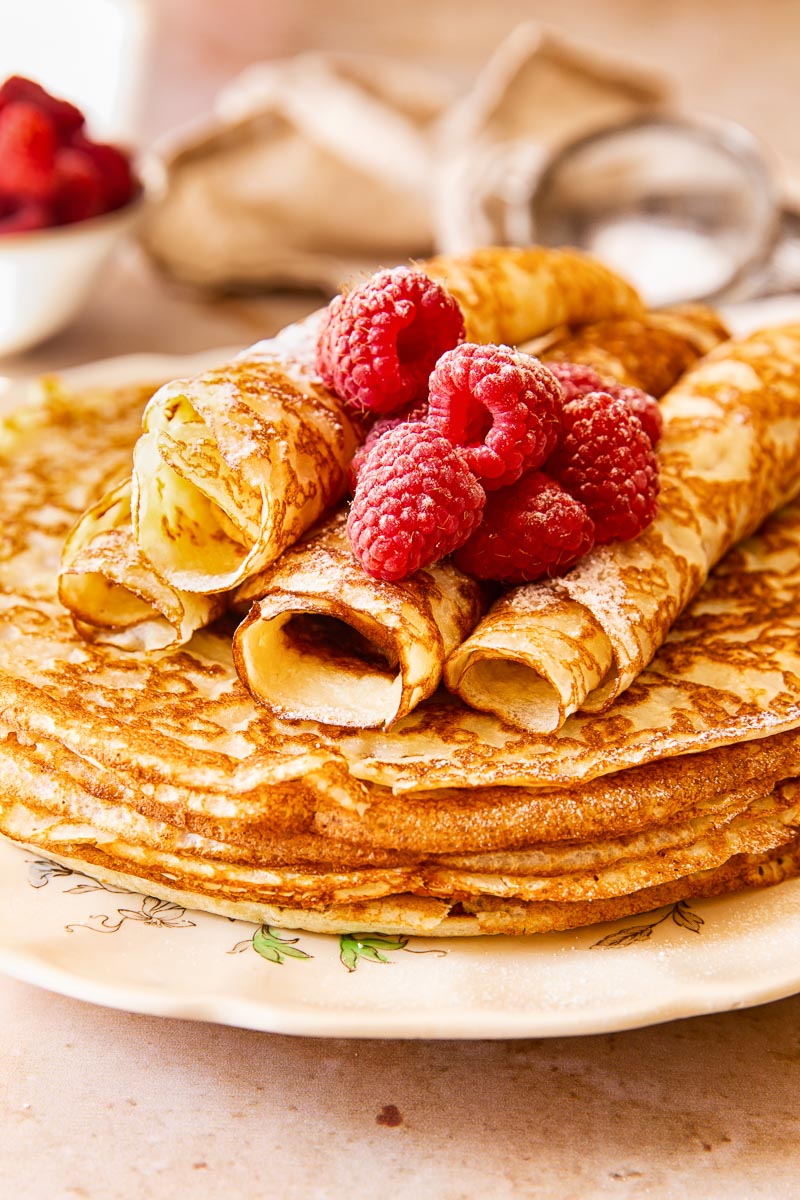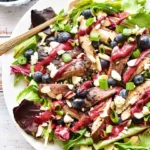Russian cuisine is rich and diverse, offering a wide range of desserts that reflect the country’s culture and traditions. From cakes and pastries to cookies and sweets, there’s something to satisfy every sweet tooth.
Why explore Russian desserts? They provide a unique taste experience and a glimpse into Russia’s culinary history. With ingredients like honey, cottage cheese, and condensed milk, Russian desserts are both comforting and delightful.
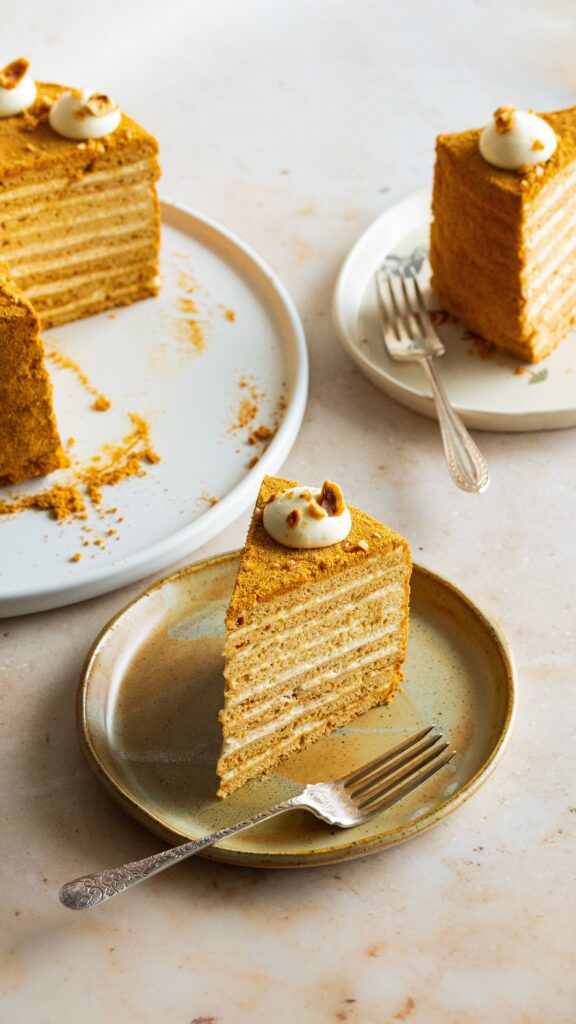
1) Medovik
Medovik, also known as Russian honey cake, is a classic dessert with rich flavors and a layered texture. This cake has eight thin layers that are delicate and soft.
To make Medovik, you start by preparing a dough mixture of eggs, sugar, honey, and flour. The dough is then rolled out into thin circles.
These circles are baked until golden brown. Each layer is then coated with a creamy frosting made from a mixture of sour cream, whipped cream, and powdered sugar. This combination provides a sweet and tangy taste.
Layering the cake requires patience as each layer needs to be spread evenly with the frosting. After stacking all the layers, the cake is refrigerated to let the flavors meld together.
Medovik is often decorated with crushed cake crumbs or nuts. This adds a crunchy texture to the cake. The result is a moist and flavorful cake that melts in your mouth.
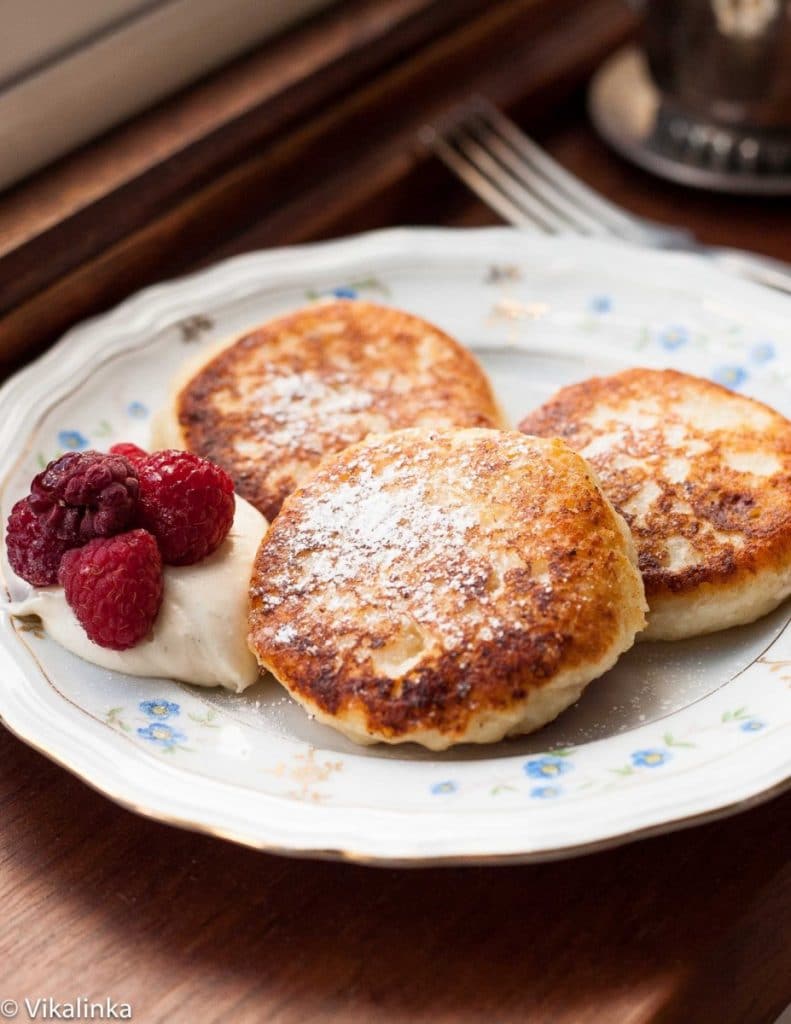
2) Syrniki
Syrniki are delightful Russian cheese pancakes. These pancakes are made from a special type of farmer’s cheese called tvorog. Tvorog is mixed with eggs, flour, and sugar to create a doughy mixture. The dough is then shaped into small, round patties.
You cook Syrniki by frying them in a skillet with a little oil. Each side should be golden brown, which usually takes about 4-5 minutes per side. This will give them a nice, crispy exterior while keeping the inside soft and creamy.
Syrniki is typically served with various toppings. Popular choices include honey, sour cream, fruit jams, or applesauce. These toppings add a sweet or tangy flavor that complements the richness of the cheese pancakes.
You can also freeze Syrniki for later. Simply place the pancakes on a tray, freeze for a few hours, then store them in an airtight container. When you’re ready to eat them, there’s no need to defrost—just cook them directly from the freezer. This makes Syrniki a convenient option for a quick and tasty breakfast or dessert.
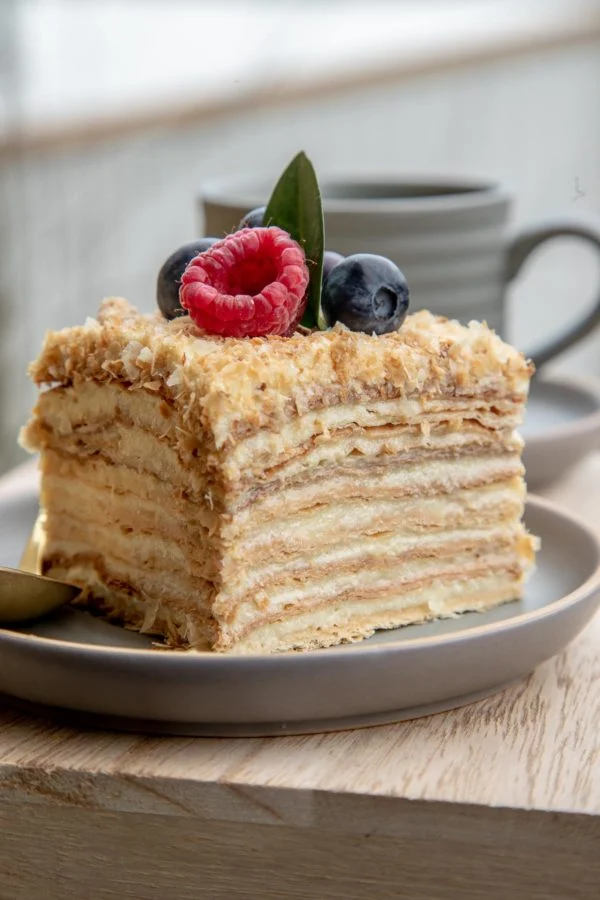
3) Napoleon Cake
Napoleon Cake is a popular Russian dessert known for its many layers of flaky pastry and rich, creamy filling. It’s often compared to the French mille-feuille but has its own unique style and taste.
To make Napoleon Cake, you need to prepare thin layers of pastry dough. Each layer is rolled out and baked until golden brown. Keep the sheets thin for a delicate texture.
The filling is usually made by cooking a mixture of eggs, sugar, milk, and flour until thick and creamy. This blend is spread between the layers of pastry to create a cake with multiple rich and flaky levels.
You should let the cake sit for several hours or overnight before serving. This helps the flavors meld together perfectly. Many people like to sprinkle crushed pastry trimmings on the top for an added crunch.
Napoleon Cake is a must-try for anyone who loves layered desserts. Its combination of crisp pastry and smooth cream makes it a delightful treat for special occasions or everyday indulgence.
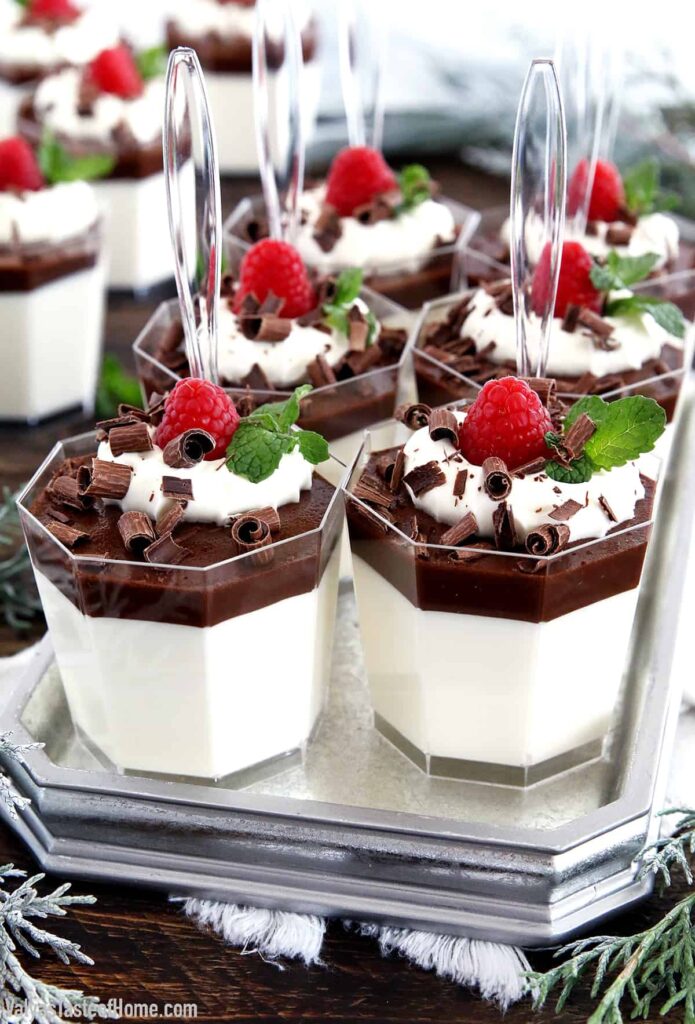
4) Ptichye Moloko
Ptichye Moloko, or “Bird’s Milk,” is a famous Russian dessert. It is a light and airy soufflé cake. This cake is often made for special occasions.
To make Ptichye Moloko, you need sugar, eggs, flour, and gelatin. The base is a soft sponge cake. On top, there is a creamy layer made with milk and gelatin.
The cake is usually covered in chocolate ganache. This gives it a rich and smooth texture. Many people enjoy the contrast between the fluffy filling and the chocolate coating.
This dessert has a unique texture that melts in your mouth. It’s popular not only in Russia but also in other post-Soviet countries. Each bite is a delightful mix of sweet and creamy flavors.
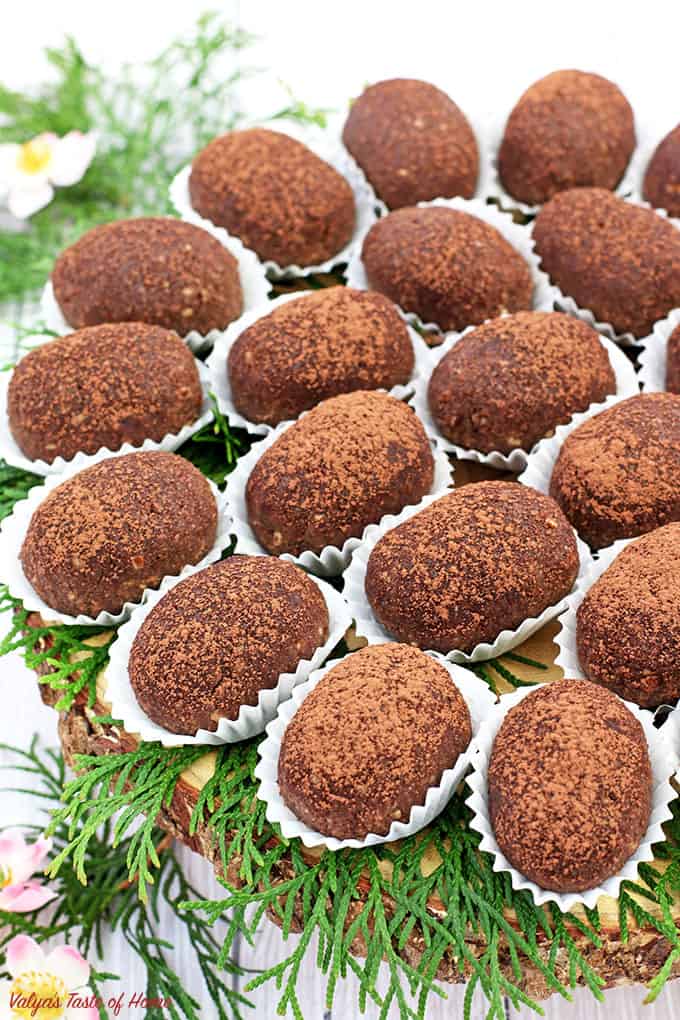
5) Kartoshka
Kartoshka is a classic Russian dessert that resembles a small potato, hence its name which means “potato” in Russian.
You make Kartoshka by blending cookie crumbs or sponge cake with butter and condensed milk. Sometimes, there’s a bit of cognac for added flavor. Cocoa powder gives it a rich, chocolatey taste.
Chopped nuts are often mixed in for added texture. The mixture is then rolled into small, potato-shaped balls. Some recipes suggest adding finely chopped nuts on the outside too.
Kartoshka is simple yet delicious. The dessert is easy to customize. You can mix in different nuts or even dried fruits if you prefer.
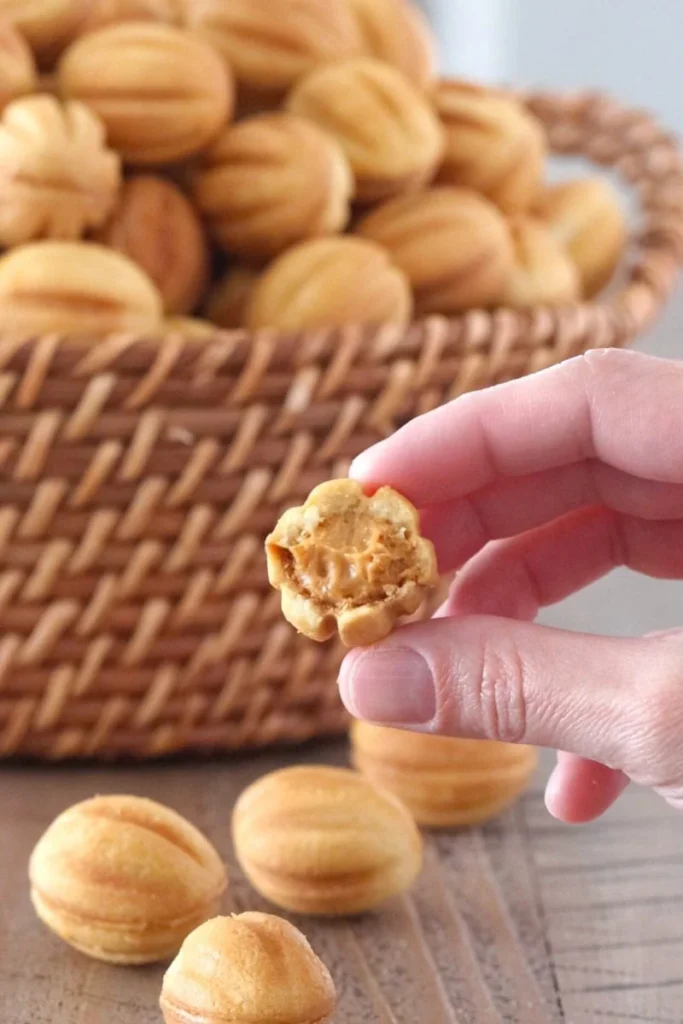
6) Oreshki
Oreshki, also known as walnut-shaped cookies, are a popular Russian treat. These cookies are shaped to look like small walnuts and are typically filled with a sweet, creamy filling.
To make the cookie shells, you start with a dough made from basic ingredients like flour, butter, and sugar. The dough is pressed into special walnut-shaped molds and baked until golden brown.
Once the cookies are baked, they are filled with a mixture commonly made from dulce de leche and butter. Some recipes also add cream cheese or vanilla extract to enhance the flavor.
You can crush any leftover cookie scraps to create crumbs and mix them with the filling. This makes the filling richer and adds a bit of texture.
After filling the shells, press two halves together gently to form a whole walnut shape. Let them set before serving so the filling can hold the cookies together.
Oreshki are perfect for holidays and special occasions. They are a classic in many Russian households and are often passed down through generations. Enjoy them with a cup of tea or coffee to complete the experience.
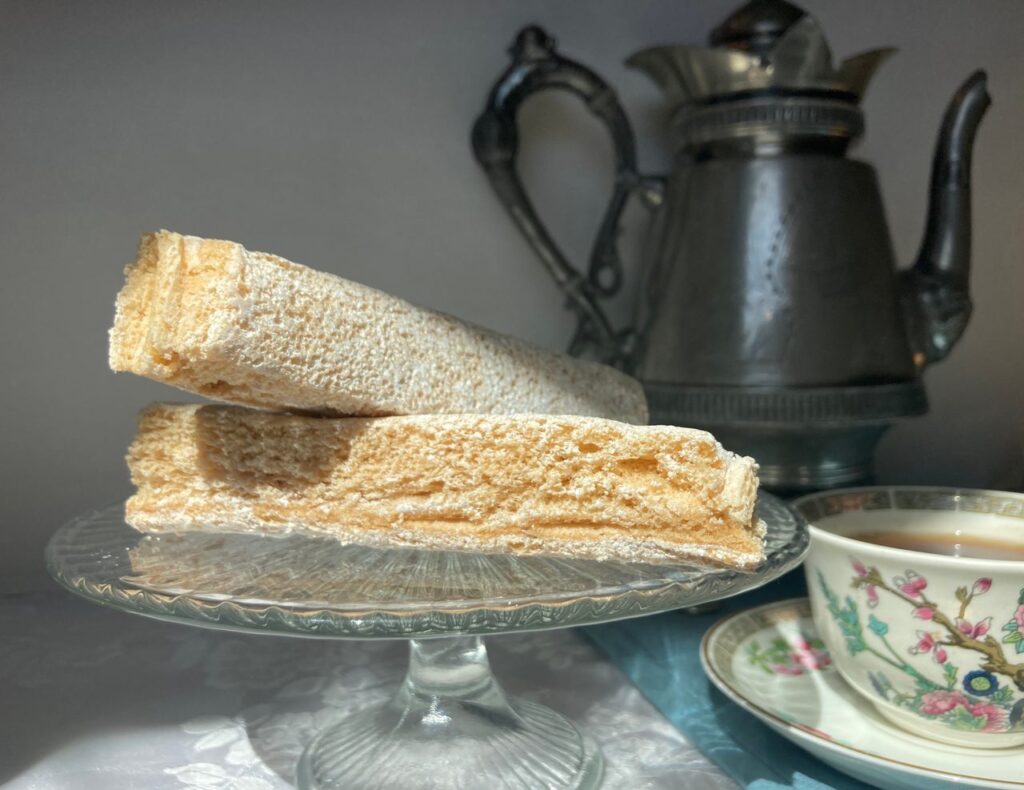
7) Pastila
Pastila is a traditional Russian sweet that dates back to the 17th century. It’s a delightful mix between candy and meringue cookies. You can think of it as light and airy puffs made from egg whites, sugar, and fruit.
Traditionally, sour apples or berries are used to make Pastila. These fruits give it a tangy taste that balances the sweetness. Sometimes, other types of fruit can also be used if you prefer different flavors.
To make Pastila, you start by creating a fruit purée. Then, you mix the fruit purée with egg whites and sugar until it becomes fluffy. The mixture is then spread onto a sheet and baked at a low temperature until it becomes firm but not hard.
Pastila was once a favorite treat of Russian tsars. It has a texture that is similar to marshmallows but with a more complex flavor due to the fruit. This dessert is not only tasty but also has a rich history, making it a special treat to try.
8) Pryaniki
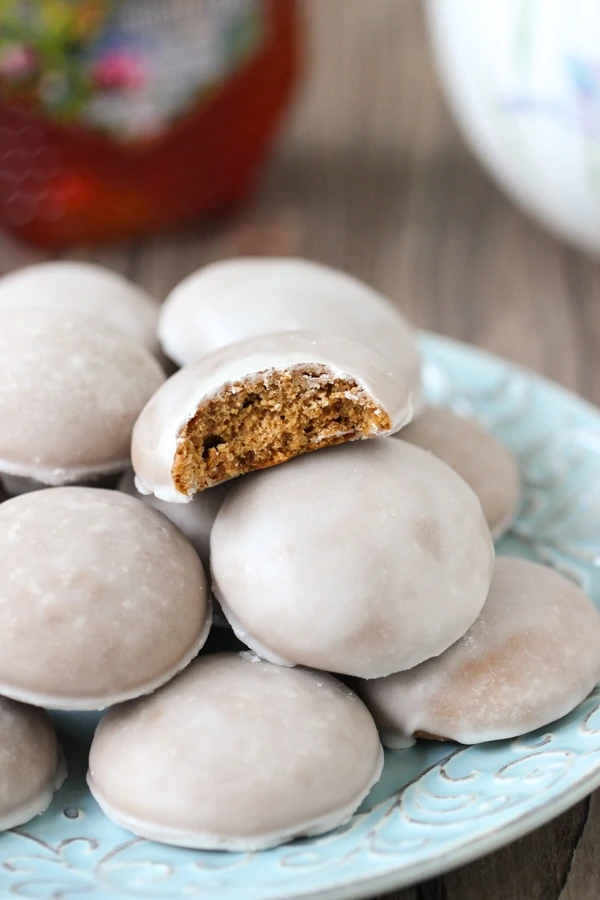
Pryaniki are traditional Russian honey spice cookies, often enjoyed during holidays and special occasions.
These cookies are made with a variety of spices like cinnamon, ginger, and cloves, giving them a warm, aromatic flavor. The addition of honey adds a distinct sweetness and moisture.
To make Pryaniki, you typically start by heating butter, sugar, and honey together until they melt and combine. Once cooled, you mix in the dry ingredients.
The dough is rolled out and cut into shapes or rounds. Some variations of Pryaniki are filled with jam. These are then baked until golden.
A mint glaze is a common topping for Pryaniki, made by mixing egg whites, powdered sugar, and peppermint extract. This glaze adds a refreshing contrast to the spices.
Pryaniki cookies are often served with tea and can be stored for several weeks, making them a convenient treat for gatherings or as a gift.
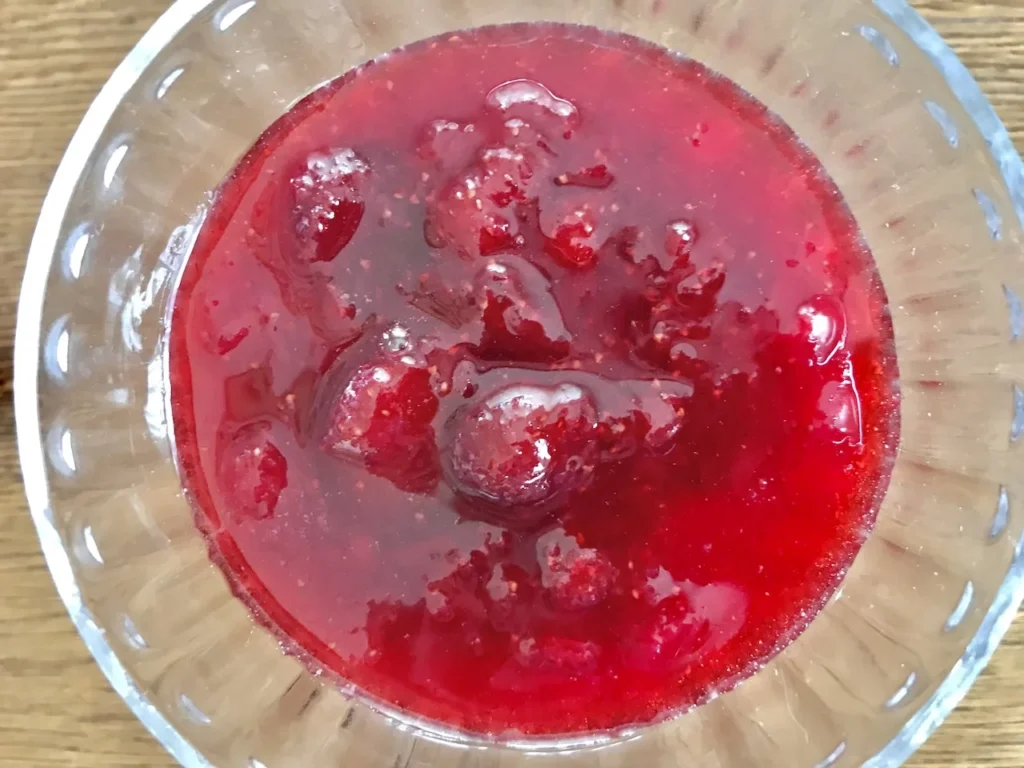
9) Varenye
Varenye is a traditional Russian dessert made from various fruits and berries. The key to this sweet treat is cooking the fruits and berries with sugar without losing their shape. The final product is a thick preserve that can be enjoyed once cooled.
Originally, varenye was made with honey since Russia did not produce its own sugar until after 1801. As sugar became more affordable in the 19th century, its popularity rose across Russia. This dessert allows you to savor the flavors of summer fruits even during winter months. Properly made varenye can be stored for up to five years.
Typical ingredients for varenye include strawberries, raspberries, cherries, and black currants. The fruits are cooked in simple syrup, created by boiling sugar and water together. The process requires careful attention to avoid overcooking the fruits.
Varenye can be enjoyed on its own or as a topping for pancakes, waffles, or toast. You might also stir it into yogurt or tea. This versatile dessert not only tastes delicious but also offers a glimpse into Russian culinary traditions.
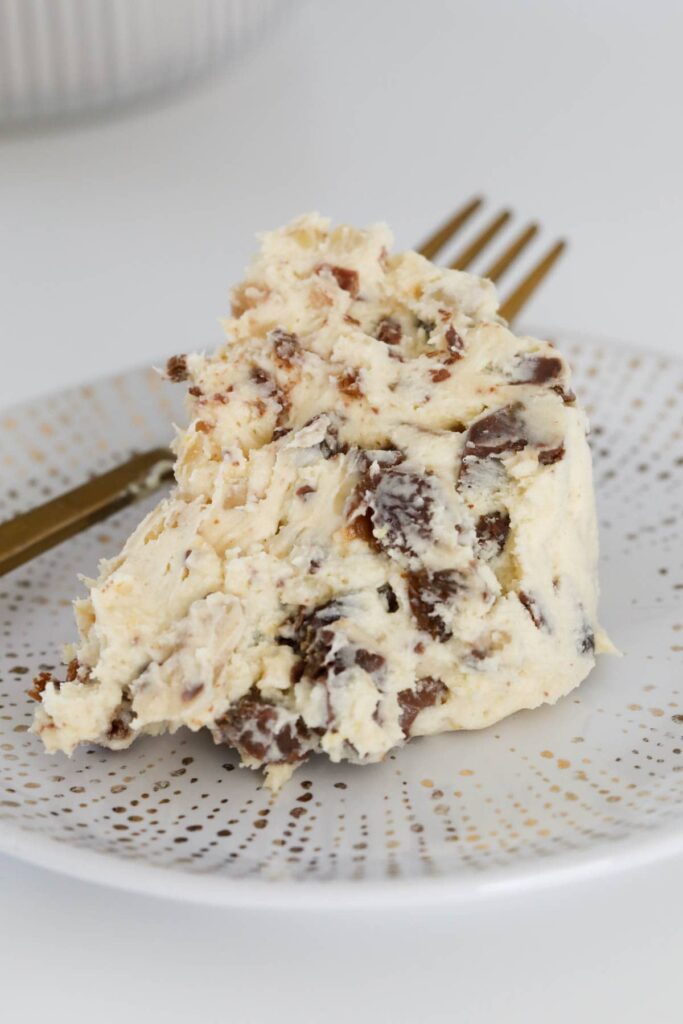
10) Pashka
Pashka is a traditional Russian Easter dessert. It’s rich and creamy, made mainly with dairy products like cream cheese, cottage cheese, sour cream, and butter.
You typically mix these ingredients together until smooth. Sugar, vanilla extract, and sometimes almonds or raisins are added for sweetness and texture.
The mixture is then chilled in the refrigerator for several hours, often overnight. This helps the flavors blend and the texture to set properly.
Pashka is often shaped using a special mold, creating a beautiful presentation. It’s a delicious treat enjoyed after Lent and a highlight of Easter celebrations.
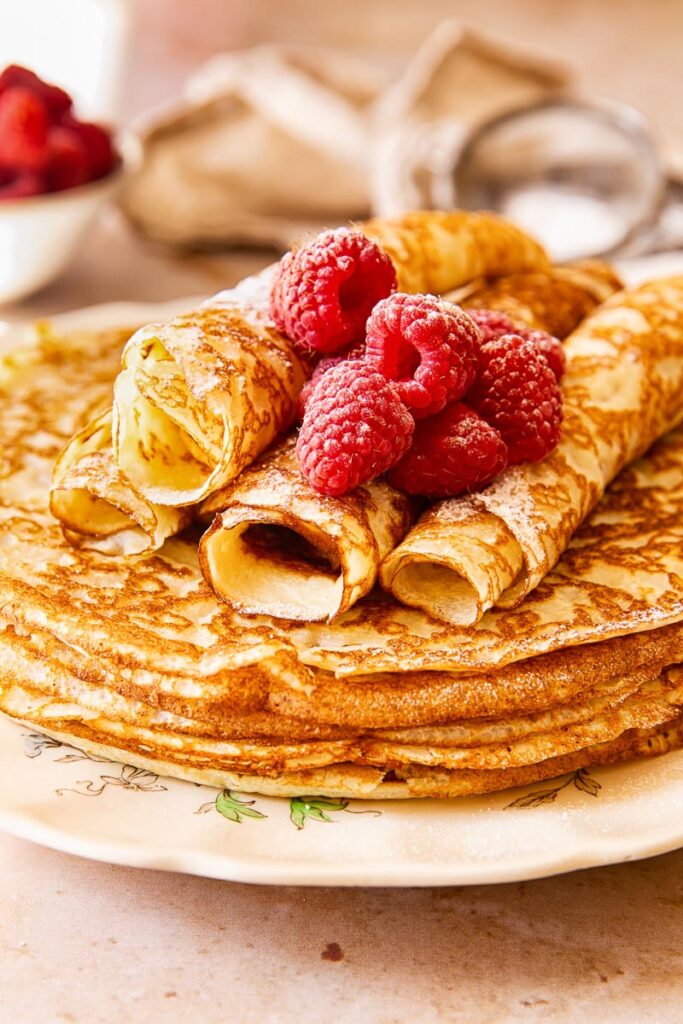
11) Blini with Honey
Blini are traditional Russian pancakes that are thin and crepe-like. They are often served with sweet or savory toppings. When paired with honey, blini make a delightful dessert.
To make blini, you will need basic ingredients like milk, eggs, flour, sugar, and a pinch of salt. First, whisk these ingredients together to form a smooth batter. Let the batter rest for about 15 minutes before you start cooking.
Heat a non-stick frying pan over medium heat. Add a bit of butter or oil to prevent sticking. Pour a small amount of batter into the pan, just enough to create a thin layer. Cook until bubbles form on the surface and the edges are golden brown.
Flip the blini carefully and cook for another 20-30 seconds. Remove from the pan and place on a plate. Repeat this process until all the batter is used up.
To serve, drizzle a generous amount of honey over the warm blini. This adds a natural sweetness that complements the delicate texture of the pancakes. You can also add fruits or nuts for extra flavor.
Blini with honey is a simple yet delicious treat that combines the rich tradition of Russian cooking with the natural goodness of honey. Enjoy this dessert as a special end to any meal.
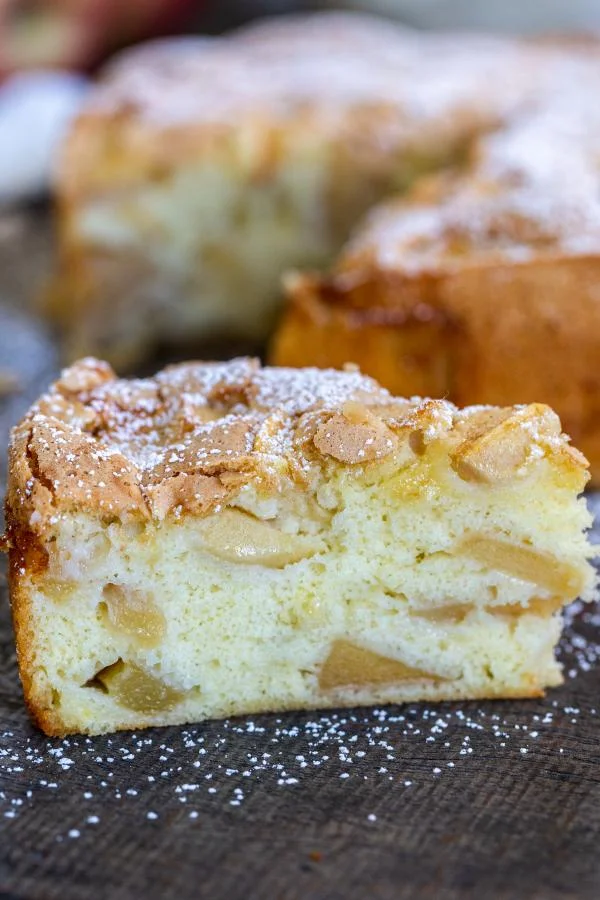
12) Sharlotka
Sharlotka is a popular Russian apple cake. It’s simple to make and doesn’t require fancy ingredients. The main ingredients are apples, eggs, sugar, and flour. This cake is light and airy, perfect for any occasion.
To start, you’ll need to peel and chop the apples. The apples provide a fresh and sweet flavor that complements the cake. Most recipes suggest using a mix of tart and sweet apples.
Next, you beat the eggs and sugar until they are fluffy. This helps give the cake its airy texture. Some recipes add vanilla extract for extra flavor.
After that, you gradually fold in the flour. Be careful not to overmix. This ensures the cake remains light and soft.
Once the batter is ready, you pour it over the apples arranged in a baking pan. It’s best to use a round cake pan or a springform pan.
Bake the cake in a preheated oven at 350 degrees Fahrenheit. It usually takes about 30-35 minutes. The cake should be golden brown on top.
Once baked, you can dust the cake with powdered sugar or cinnamon. This adds a lovely finishing touch. Sharlotka is often served warm, sometimes with a dollop of sour cream or a scoop of vanilla ice cream.
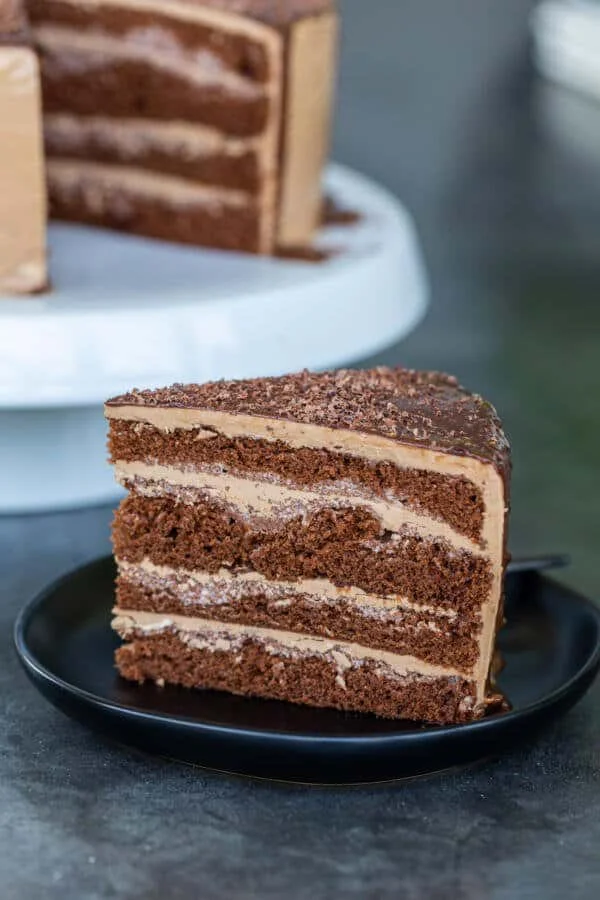
13) Praga Cake
Praga Cake, also known as Prague Cake, is a famous Russian dessert. Despite its name, it is not from the Czech Republic but has Soviet origins. This cake is known for its rich and indulgent taste.
It consists of multiple layers of chocolate sponge cake. These layers are filled and covered with chocolate custard buttercream. The cake is then often topped with a smooth chocolate ganache.
To make Praga Cake, you will need six egg yolks and six egg whites. The yolks are whipped with sugar until they turn pale yellow and fluffy. The whites are whipped separately with sugar until you get stiff peaks.
The cake is baked in layers and assembled with the chocolate custard buttercream between each layer. This makes for a decadent and creamy texture.
Praga Cake is usually enjoyed during celebrations and special occasions. Its deep chocolate flavor and luxurious texture make it a favorite among chocolate lovers.
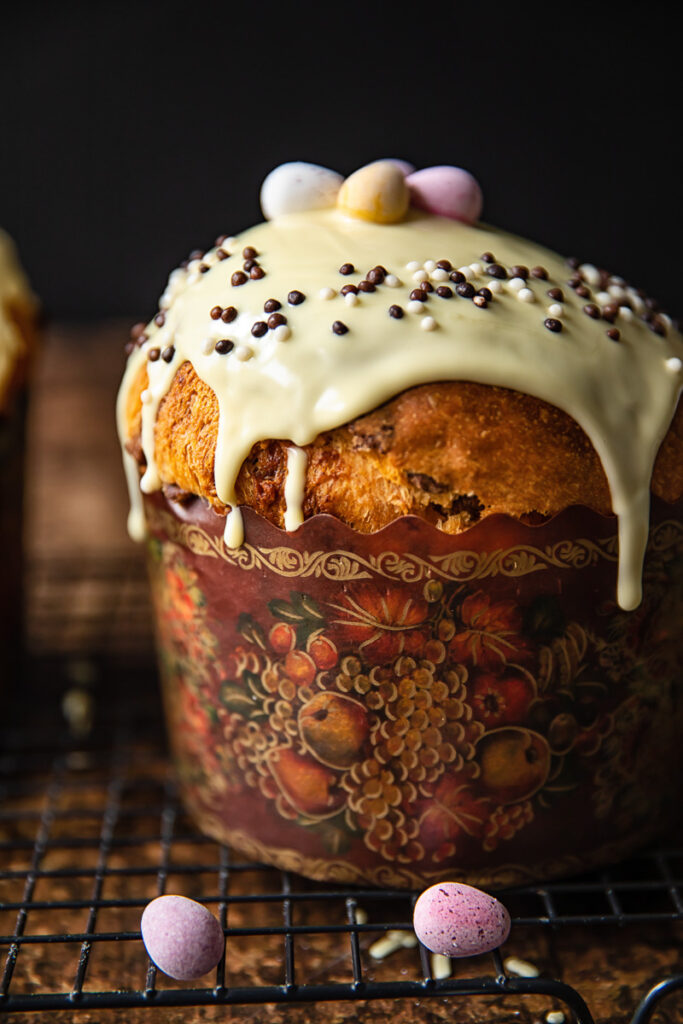
14) Kulich
Kulich is a traditional Russian Easter bread. This sweet, tall bread is often decorated with icing and colorful sprinkles. It’s a popular treat during the Easter holiday in Russia.
To make kulich, you start by soaking raisins in vodka to make them soft. Then, warm milk with cardamom and saffron threads. Let it cool to lukewarm.
In another bowl, beat egg yolks with sugar until thick and pale. Add brandy and salt to the mix. Combine this with a yeast dough and melted butter. Mix in the flour to create a thick batter, similar to sour cream.
Let the dough rise in a warm place until it doubles in size. After that, bake it in preheated ovens for about 35-40 minutes. Remove and cool before adding any glaze or decorations.
Kulich is moist and rich, with hints of cardamom and saffron. You can enjoy it fresh or the next day.
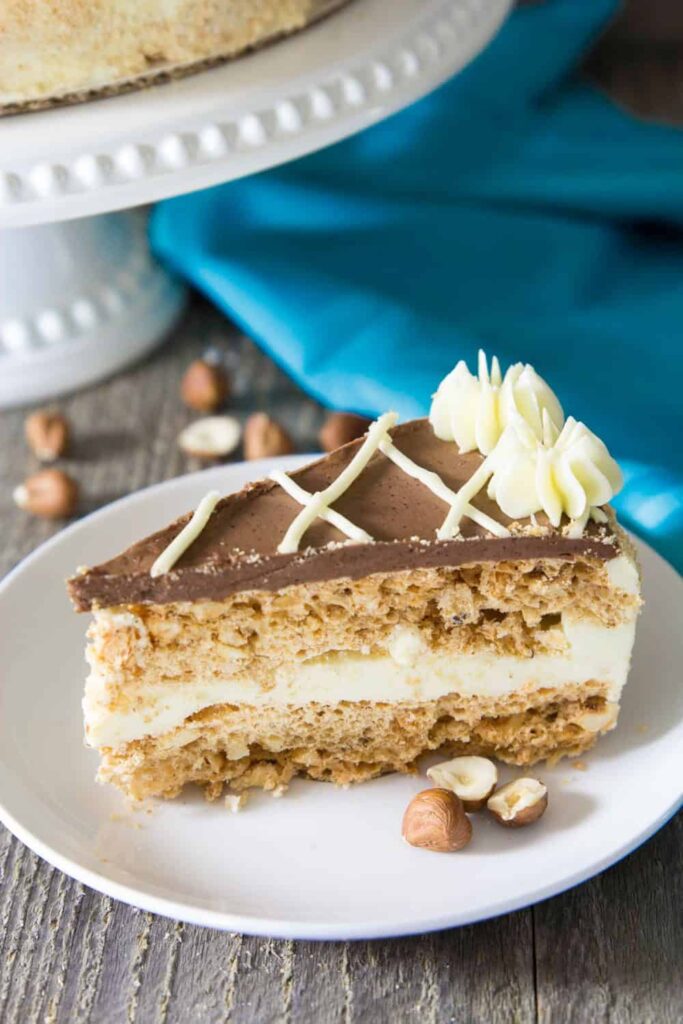
15) Kiev Cake
Kiev Cake, also known as Kyiv Cake, is a famous Ukrainian dessert. It’s a layered cake, often made with meringue, nuts, and a rich, creamy filling. The cake features a balance of textures, with the crisp meringue and the smooth filling offering a delightful contrast.
This cake often includes layers of hazelnut or cashew meringue. The nuts add a satisfying crunch and nutty flavor. The meringue layers are usually baked at a low temperature for several hours to achieve the right texture.
For the filling, you might use Russian buttercream. This buttercream is made with sweetened condensed milk and butter, giving it a rich, creamy texture. You can also add flavors like vanilla or cocoa to enhance the taste.
When assembling the cake, alternate the meringue and buttercream layers. It’s common to add a soaking mixture, like rum or cognac syrup, to keep the cake moist and flavorful. Decorate the cake with more buttercream and chopped nuts for a beautiful finish.
Kiev Cake is not only delicious but also visually stunning. It’s a perfect dessert for celebrations or special occasions.
Cultural Significance Of Russian Desserts
Russian desserts play a crucial role in various cultural and regional traditions. They are often featured in celebrations and showcase significant regional variations.
Traditional Festive Desserts
Russia’s festive desserts are a highlight of many celebrations. For example, Kulich is a tall, cylindrical cake enjoyed during Russian Orthodox Easter. It’s topped with colorful icing and sometimes decorated with sprinkles. Another festive treat is Medovik, a honey cake with multiple layers and a rich cream filling, often made for birthdays and special occasions.
Then there’s Blini, thin pancakes served during Maslenitsa, a holiday marking the end of winter. Blini are enjoyed with toppings like sour cream, caviar, or jam. Each of these desserts speaks to a specific aspect of Russian culture and traditional celebrations.
Regional Variations
Russia’s vast geography means its desserts vary greatly by region. In the northern regions, you’ll find desserts like Pryaniki, spice cookies made with honey and herbs. These cookies have a long shelf life, making them popular in colder areas.
In contrast, the southern regions favor fruit-based desserts. Varenye, a type of preserve made from berries or fruits like cherries, plums, or apricots, is common. These regions also excel in making pastries stuffed with nuts and dried fruits.
Eastern regions, influenced by Asian cuisine, offer unique sweets like Chak-Chak, crispy dough pieces coated in honey often enjoyed during family gatherings. Understanding these regional variations helps you appreciate the diverse culinary landscape of Russian desserts.
Key Ingredients In Russian Desserts
Russian desserts often feature a variety of ingredients that bring out their unique flavors. Commonly used components include dairy products like condensed milk and cottage cheese, as well as berries and fruits which add a fresh and tangy taste.
Dairy Products
Dairy is a cornerstone of many Russian sweets. Condensed milk is frequently used, providing a rich and sweet taste to confections like kartoshka (Russian cake pops). You might also find it in caramel or fudge-like treats.
Cottage cheese, known locally as tvorog, is crucial for desserts like vatrushka, which is a pastry filled with sweetened cheese. It is also used in layered cakes like sirniki, which are typically fried cheese pancakes.
Butter and sour cream are other essential dairy products. Butter adds richness and moisture to cakes and pastries. Sour cream, a staple in Russian kitchens, often serves as a base for cake frostings and fillings.
Berries and Fruits
Berries and fruits bring a bright and tangy flavor profile to Russian desserts. Apples are often featured, especially in classics like sharlotka, a simple apple cake that’s easy to make but very flavorful.
Raspberries, strawberries, and blackcurrants are popular choices for jams, fillings, and sauces. These berries can be used fresh or preserved, giving desserts a burst of natural sweetness.
Cherries are another favorite, commonly found in pies and tarts. Sometimes, even dried fruits like apricots and raisins are used to add a chewy texture and a hint of sweetness.
Role Of Desserts In Russian Cuisine
Russian cuisine features a wide array of desserts that play significant roles in both daily life and festive celebrations. Blini and pirozhki are commonly enjoyed desserts, reflecting how everyday sweets and celebration treats hold cultural importance.
Everyday Treats
In daily Russian life, desserts are often simple yet satisfying. Common choices include blini, thin pancakes sometimes filled with jam or sweetened with a sprinkle of sugar. These are easy to make and enjoyed at breakfast or as a snack.
Pirozhki also stand out. These small pastries can be filled with various sweet fillings like sweetened cottage cheese or fruit preserves. Both blini and pirozhki represent the practical yet delicious aspect of everyday Russian desserts.
Another popular everyday treat is syrniki. These are cheese pancakes made with farmer’s cheese, flour, eggs, and a bit of sugar. They are usually fried until golden and served with sour cream or jam. They are quick to prepare and provide a nutritious option for families.
Desserts In Russian Celebrations
Russian celebrations are rich with specialty desserts that often include intricate and labor-intensive recipes. One noteworthy dessert is Medovik, or honey cake. This layered cake is made with honey, smetana (sour cream), and sometimes even condensed milk. It requires considerable preparation but is a centerpiece at many gatherings.
Another festal favorite is Napoleon cake. This dessert is a Russian twist on the French pastry, featuring multiple flaky layers filled with custard or cream. It’s especially popular at large social events like weddings and anniversaries.
For Easter, kulich, a sweet bread similar to Italian panettone, is commonly prepared. It’s often topped with icing and sprinkles. They are shared with friends and family, symbolizing the end of Lent.
Each of these desserts has a cultural significance, acting as symbols of hospitality and celebration in Russian society.
